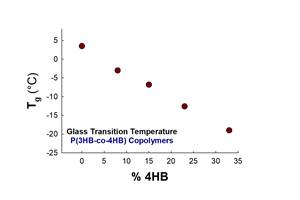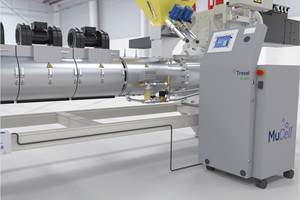Cleaning Up - January 2001
Dirty Oil Bottles Come Clean After a decade of development and many twists and turns, CO2-based recycling technology for HDPE motor-oil bottles is finally in the right place at the right time.
Dirty Oil Bottles Come Clean
After a decade of development and many twists and turns, CO2-based recycling technology for HDPE motor-oil bottles is finally in the right place at the right time. These bottles—2 billion of them a year in the U.S. alone—are messy to reclaim, owing to the oily residue they contain. Cleaning them with solvents or water generates hazardous waste. Now, the first commercial-scale equipment for a “clean” solution will be set up in April on a truck in Italy. It uses a process developed by Honeywell Federal Mfg. & Technologies in Kansas City, Mo., and equipment developed by Fedegari Autoclavi S.p.A. in Italy. The equipment will be marketed here by ITec International Technologies Inc. in Cincinnati.
Cleaning with gas
Liquid carbon dioxide under high pressure behaves like a solvent. It can separate oil from HDPE, allowing both the plastic and oil to be recovered in highly pure form, with no polluting byproducts. CO2 was applied to oil-bottle recycling back in the 1980s, but as a cryogenic coolant, not a solvent. The process was inefficient and never commercialized.
In the early 1990s, the U.S. Dept. of Energy began investigating liquid CO2 as an environmentally friendly degreasing agent and dry-cleaning solvent. It was applied to oil-bottle recovery by AlliedSignal (now Honeywell), which manages a DOE facility in Kansas City. Honeywell first worked with a small recycler, Blueberry Plastic Mill Inc. in Des Moines, Iowa. When Blueberry went out of 大象传媒, Honeywell worked with FixCor Recycling in Heath, Ohio, which was molding pallets of recycled HDPE. FixCor got a California state grant to develop equipment for Honeywell’s patented process. But FixCor ran into financial difficulties and halted development in ’99.
Former FixCor president Gary DeLaurentiis and several others familiar with the Honeywell CO2 technology obtained a license from Honeywell to develop it. They set up ITec early last year to design and sell CO2 cleaning machinery to recyclers and oil-bottle makers worldwide.
The semi-continuous process uses multiple pressure vessels that can be small enough to mount on a truck. One or more vessels process a batch of material, while other vessels are being loaded or unloaded. Each batch takes about an hour. CO2 absorbs the oil in the liquid state and then releases it when it turns into a gas. CO2 is then recycled back into liquid. Total processing cost is about 3¢/lb, ITec says.
The Italian connection
Honeywell introduced fledgling ITec to Fedegari, a major European manufacturer of autoclaves and CO2-based extraction, degreasing, and dry-cleaning equipment. This was a big stroke of luck for ITec. “Fedegari’s experience dramatically shortened the development time,” says Robert Rothfuss, ITec executive v.p.
As DeLaurentiis and Rothfuss began commuting to Italy to work with Fedegari, they picked up Italian investors and customers. As it turned out, Italy had lots of pent-up interest in a mobile process to clean oil bottles, since the Italian government mandated separate collection of these bottles and strictly limited the ability to transport them because of the danger of spontaneous ignition inside a closed truck on a hot day.
By last July, Fedegari had built a prototype machine, which ITec markets as the ECO2 System. The first unit will be sold to O.P.T. Ltd. in Southern Italy, and six other Italian companies have ordered mobile systems that will travel to regional collection points such as gas stations.
—Jan H. Schut
In the U.S. alone, 2 billion one-quart oil bottles are discarded each year. They contain 250 million lb of HDPE and 15 million gal of oil residues. After a decade of development, a process using liquid CO2 can reclaim both the oil and plastic without generating hazardous waste.
Related Content
Film Extrusion: Boost Mechanical Properties and Rate of Composting by Blending Amorphous PHA into PLA
A unique amorphous PHA has been shown to enhance the mechanical performance and accelerate the biodegradation of other compostable polymers PLA in blown film.
Read MoreHow to Optimize Injection Molding of PHA and PHA/PLA Blends
Here are processing guidelines aimed at both getting the PHA resin into the process without degrading it, and reducing residence time at melt temperatures.
Read MoreFoam-Core Multilayer Blow Molding: How It’s Done
Learn here how to take advantage of new lightweighting and recycle utilization opportunities in consumer packaging, thanks to a collaboration of leaders in microcellular foaming and multilayer head design.
Read MoreNPE2024 Wrap-Up: Sustainability Dominates Show Floor News
Across all process types, sustainability was a big theme at NPE2024. But there was plenty to see in automation and artificial intelligence as well.
Read MoreRead Next
See Recyclers Close the Loop on Trade Show Production Scrap at NPE2024
A collaboration between show organizer PLASTICS, recycler CPR and size reduction experts WEIMA and Conair recovered and recycled all production scrap at NPE2024.
Read MoreBeyond Prototypes: 8 Ways the Plastics Industry Is Using 3D Printing
Plastics processors are finding applications for 3D printing around the plant and across the supply chain. Here are 8 examples to look for at NPE2024.
Read MorePeople 4.0 – How to Get Buy-In from Your Staff for Industry 4.0 Systems
Implementing a production monitoring system as the foundation of a ‘smart factory’ is about integrating people with new technology as much as it is about integrating machines and computers. Here are tips from a company that has gone through the process.
Read More












